Neutrinos, Neuroscientists and Nutrition fill up this week's Naked Scientists NewsFlash! We'll hear how repeated experiments bear out the idea that neutrinos may travel faster than light, find out why thousands of neuroscientists have decended on Washington DC, and how to protect cells from radiation. Plus, how the brain responds to different diets!
In this episode
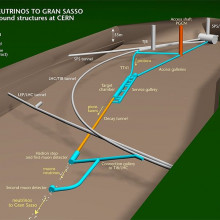
00:21 - More superluminal neutrinos
More superluminal neutrinos
In September results indicating that neutrinos travel faster than the speed of light were released, this week the same group has released further data.
The experiment is spread out between CERN near Geneva and a neutrino detector near Rome called OPERA over 700km away. In CERN groups of protons flying around the LHC ring are redirected down an alternative route and crash into a lump of graphite. This produces a variety of particles but includes a large number of particles called mesons, which have a very short lifetime, they fly down a kilometre long tube where some of them decay to form an electron and a neutrino.
These neutrinos hardly interact with matter, so they easily pass through the 700km of solid rock, and then a tiny proportion of them interact with plates of lead in the OPERA detector inside a mountain in Italy, producing a signal which can be detected.
The experiment was designed to investigate whether neutrinos change over time, and to measure how much slower than the speed of light they travel, which would give information about their mass and behaviour.
The very surprising result was that they appeared to be travelling the distance about 60ns faster than the speed of light, travelling about 2.5 parts in 100 000 faster. This would indicate fundamentally new physics and extraordinary claims require extraordinary evidence, and they have had a variety of suggestions from the community on how they could improve their results.
So they have gone away and tried to improve the resolution of their results. They have tried to get a more accurate measurement of the relative positions of the two facilities as the time difference could be explained by an error of position of about 180m. They have also made the bunches of protons that create the neutrinos shorter which makes it easier to measure the exact time they arrive. And seem to give the same result.
This is interesting but there is still a lot of evidence to overcome, for example in 1987 there was a supernova in the large magellanic cloud which produced both light and neutrinos and they both arrived here a few hours apart where as with the difference of speeds they were finding at CERN you would expect a difference of a couple of years. These neutrinos were lower energy than the ones produced in this experiment so it is possible they behave differently, but without independent confirmation I wouldn't start ordering your faster than light spacedrives yet.
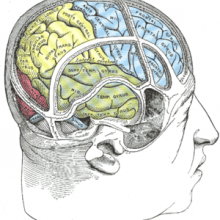
04:51 - Bringing Together Brain Scientists
Bringing Together Brain Scientists
Over 32, 000 neuroscientists, from around the world, converged in Washington, DC, this week for the 2011 Society for Neuroscience Conference, which included over 16,000 presentations!
Here are just a few of the highlights:
Christopher Morgan, at the University of Pennsylvania, showed that stress experienced by a pregnant mouse can affect the subsequent behaviour of her sons, and even her sons' sons.
Exposing pregnant females to stressors - like the smell of a fox - during pregnancy seems to trigger heritable changes that make subsequent generations of males more stress-sensitive themselves, and also have lower levels of the hormone testosterone.
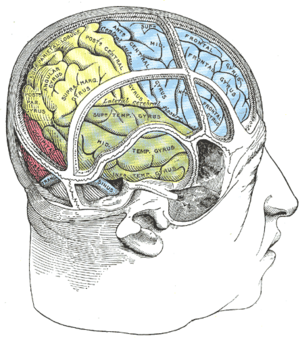 The effect, the researchers found, is down to changes in the levels of a family of gene products called microRNAs, which are used to control the activities of other genes.
The effect, the researchers found, is down to changes in the levels of a family of gene products called microRNAs, which are used to control the activities of other genes.
Exposure to stress switches the profile of these microRNAs so that the brains of developing male foetuses express the same gene pattern as the brains of developing females, triggering a feminising effect.
And because the changes are brought about by what are called epigenetic modifications - this is where chemical groups are added to DNA to control the activity of certain gene sequences - the effects are also inherited by future generations.
This shows that mothers exposed to stress at a critical point in pregnancy could adversely affect the brain development of male offspring. That said, we need to stress ourselves, that this is a study done in mice and we don't know yet whether the same applies to humans...
The conference also has a public lecture series called Dialogues in Society. This year's topic was timely: it focused on how behaviour, and its biological bases, drives the economy.
Dr. Robert Shiller, who's an economist, together with a panel of neuroscientists, discussed the role of decision-making in driving the volatility of money markets, currencies, stocks and commodities.
What they were asking is whether an understanding of the biological mechanisms of reward anticipation, risk-taking, and emotion also play out in financial scenarios too.
This is a relatively new area of inquiry called "neuroeconomics"!
There was also a session on risk aversion and decision-making, which looked at how the brain tries to maximise the sizes of rewards and minimise losses, including in gambling settings.
Danish scientist Dr. Julian Macoveanu found that a drug called ketanserin, which blocks certain receptors for brain transmitter chemical called serotonin, makes people less likely to take a gambling risk, but only after they've already suffered a loss that they judge to be unfair.
According to Macoveanu, "When gambling, people tend to be more sensitive to potential losses than gains of similar amounts, indicating that loss avoidance plays a major role when we make risky decisions."
He also points out that the finding "may have clinical significance because patients with mood and anxiety disorders, some of which are associated with dysfunctions in serotonin transmission, often overemphasise the impact of negative outcomes..."

09:38 - Powering up radiotherapy
Powering up radiotherapy
A way to boost the effectiveness of radiotherapy and protect patients and even astronauts from the effects of radiation exposure has been discovered by scientists at  Oslo University.
Oslo University.
Radiotherapy causes side effects because the dose of radiation needed to destroy sufficient numbers of cancers cells also causes significant damage to healthy tissue. But the dose cannot be reduced or delivered in smaller amounts over time because radiation exposure also causes and effect called "radiation resistance" in the surviving cells, whereby subsequent doses of radiation are much less effective.
But now Erik Pettersen and Nina Edin at Oslo University have discovered the chemical basis of this resistance effect, meaning that if it can be selectively deactivated in cancer cells, or conversely boosted in healthy tissue, then the side effects of radiotherapy could be minimised by cutting down the dose.
They made the discovery by showing that growth medium from cells exposed to radiation can confer radio-resistance upon second batch of non-irradiated cells. This was the initial proof that a chemical signal of some kind must be being secreted by radiation-exposed cells. In the context of a human body exposed to radiation, this means that, paradoxically, radiation-exposed healthy tissue can also end up protecting the cancer cells by secreting the same signals.
Now they've identified the factor responsible, a signal called TGF-beta-3, which locks cells into a resistant state. Removing it from a tumour renders it vulnerable again, whilst elevating the signal in healthy tissue can lead to protection.
The potential benefits don't stop there though. As the researchers point out, the same trick could be exploited to protect humans from incidental radiation exposure - such as astronauts and high-altitude fliers - as well as patients undergoing high-dose x-ray investigations like CT scans...
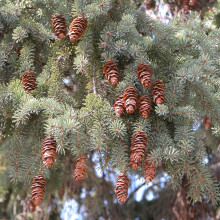
13:11 - Tree based brew
Tree based brew
There is a large amount of energy locked up in all the wood that is left over after your planks and paper have been made, and most of this wood is in the form of soft woods from conifers. You can release the energy as heat in a fire, or in a power station, but if you could convert it into something that would run a car, it would be much more valuable.
It is possible to add enzymes, cellulases, to the wood which will break down the cellulose into sugars, which can then be fermented into ethanol, concentrated and burnt in a car. But these enzymes will only work after the structure of the wood is broken up by heat and chemical treatment. This releases all sorts of chemicals in the softwood, which slow the growth or even kill the yeast. This means that it is only possible to ferment solutions with about 4-5% of wood, and this means that not very much ethanol is produced and it isn't economic to concentrate it enough to burn.
Gary Hawkins and Joy Doran-Peterson from the University of Georgia have been using evolution or at least selective breeding to help with this. They have grown a fairly standard yeast in stronger and stronger solutions of the inhibitory chemicals in the wood, meaning that theyeast which is adapted to this environment survives.
Their strain of yeast can convert 70% of the theoretical maximum amount of ethanol in 3 days and 90% in 5 days, at concentrations up to 17% wood solids. This is much more economic, and with more breeding they could do better. So you may be filling up with fermented pine in not too long.
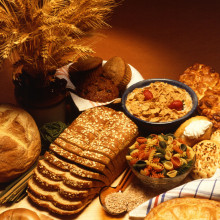
14:52 - How the Brain Detects Diet
How the Brain Detects Diet
Dr Denis Burdakov, Cambridge University
Chris - Dr. Denis Burdakov is a Neuroscientist and he's been looking at how the brain ensures that we eat a balanced diet. Denis, welcome.
Denis - Hello.
Chris - First of all, why is it important that the brain can register what we're eating?
Denis - I think it's import ant for two reasons. The first of those is that in order to respond to energy deficiencies, sort of to a fall of nutrients in our blood, we need to change our behaviour, we need to change eating behaviour, we need to find food and so on, or stop eating if we are getting too many nutrients. Behaviour is controlled by the brain so that's why it's important for the brain itself to sense the nutrients in the body.
ant for two reasons. The first of those is that in order to respond to energy deficiencies, sort of to a fall of nutrients in our blood, we need to change our behaviour, we need to change eating behaviour, we need to find food and so on, or stop eating if we are getting too many nutrients. Behaviour is controlled by the brain so that's why it's important for the brain itself to sense the nutrients in the body.
Chris - But also, not just pile in tons of glucose and nothing else. In some way, the brain knows what particular micronutrients. Because if you study an animal in its natural environment, it tends to eat a diet that's right for it, arguing there's something behavioural about searching out the right foods that are right for that animal's metabolism.
Denis - That's correct and it's been quite mysterious how the brain does this because most studies looked at effects of glucose on special brain cells which regulate alertness and food seeking. Things like how protein components and fat is sensed have been much more elusive in mechanistic terms.
Chris - So how did you set about trying to answer that then, to work out what the brain is doing to register when I go for dinner, what micronutrients I've consumed?
Denis - So we were originally motivated by the recent findings that our diet and our sleep patterns are so closely related. You can kind of mess up your sleep by eating a high fat diet and on the other hand, if you mess up your sleep, if you have a jet lag and so on, you can over consume food and develop obesity and diabetes. And we're actually working on brain cells that regulate both wakefulness and feeding: they simulate wakefulness and they drive feeding, and we were putting different nutrients on these cells to see whether these cells themselves as well as controlling behaviour can actually measure what nutrient levels we get in the body.
Chris - In other words, you'd squirt some glucose onto them, some sugar, they might change their activity, but then you could also ask, "Well what happens if I give them a dose of the amino acids, the building blocks of protein for example?"
Denis - Exactly. So we started with sugar about 5 years ago and we found out that amazingly, if you increase the concentration of sugar around these brain cells called orexin neurons, then the cells fall silent and they don't emit these impulses anymore, that they drive wakefulness and food seeking. So more recently, sort of this year, we asked, what about other components of meals? We don't just eat glucose. There is always some protein around. So we mixed together an amino acid mixture based on the egg white composition. So these proteins in egg white get digested to a certain combination of amino acids, and it's known at what concentrations these amino acids reach the brain. So we mixed this together and we put them on those wakefulness promoting orexin neurons, and we expected the cells to fall silent because glucose silences them. But actually, we found that these egg white-like amino acids stimulate these wakefulness promoting neurons.
Chris - So in other words, they are registering some of the micronutrients that we're eating. So there are specific cells that are specifically sensitive to some of the things that are coming into the body.
Denis - Absolutely. So in the brain region called the hypothalamus, there are  several populations of cells that can sense nutrients selectively but the new thing that we found is that all nutrients don't do the same things. Some nutrients can upregulate the activity of these brain cells which stimulate food seeking behaviour, other nutrients can shut them down and we think we now are looking at this population of cells that control the balance between different nutrients in the diet.
several populations of cells that can sense nutrients selectively but the new thing that we found is that all nutrients don't do the same things. Some nutrients can upregulate the activity of these brain cells which stimulate food seeking behaviour, other nutrients can shut them down and we think we now are looking at this population of cells that control the balance between different nutrients in the diet.
Chris - If you look at amino acids, because they come in two flavours don't they? They come in the kinds that we can make in the body. They also come in the other flavour, the kind we can't make in the body, and we have to eat. And if you become deficient in those, you have metabolic problems. So are these cells differentially sensitive to those different flavours, for want of a better word, of amino acids?
Denis - They seem to be extremely differential to the two groups of amino acids. So the essential amino acids, the amino acids you cannot make and you need to consume, these cells effectively do not see, but the non-essential amino acids are potent stimuli of these cells that drive feeding. So we think - the point of this is that if you consume a meal which is unbalanced then it has too many amino acids that you can make in the body and you don't really need, these cells will make you keep eating until you find and consume essential amino acids thereby providing the body what it really needs.
Chris - Does this shed any light on the claim that if you want to not end up hungry again by 11 o'clock in the morning, eat a big fried breakfast that has got loads of protein in it. You know, the bacon and the eggs actually help to stave off hunger for longer. Does it help us to understand why that might be true?
Denis - Well actually, it's almost the opposite for what you'd expect. You think if you eat a lot of proteins, especially proteins which are non-essential amino acids, you would actually - you might get hungrier quicker, but you also feel more alert. So, these cells will make you more alert, possibly more efficient at work if you eat a protein rich breakfast. Another thing these cells do apart from driving feeding, they actually tell the body to burn calories through thermogenesis and so on. So the net effect on calories is actually negative. So they tell you to burn more calories than the calories you consume. So these cells will kind of - they might make you hungry, but they will make you more alert and they would actually keep your body weight down overall.
Chris - so to finish off Denis, if we could target these neurons then in people who have a tendency to overeat, we can make them burn more energy but maybe also, eat less in the first place so their weight would come down for two reasons.
Denis - Well, absolutely. That's the exciting thing. Possibly, we could find a dietary combination of nutrients which can tune the cells and control body weight as well as alertness, and that's what we're working on right now.
Chris - Super! We'll leave it there for a second. That's Denis Burdakov. He's from Cambridge University. He published the work he's just been talking to about in the journal Neuron this week.
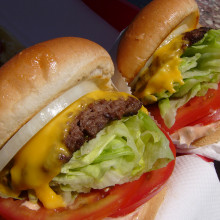
20:56 - Neutrinos and Nutrition
Neutrinos and Nutrition
Neutrinos, Neuroscientists and Nutrition fill up this week's Naked Scientists NewsFlash! We'll hear how repeated experiments bear out the idea that neutrinos may travel faster than light, find out why thousands of neuroscientists have decended on Washington DC, and how to protect cells from radiation. Plus, how the brain responds to different diets!










Comments
Add a comment